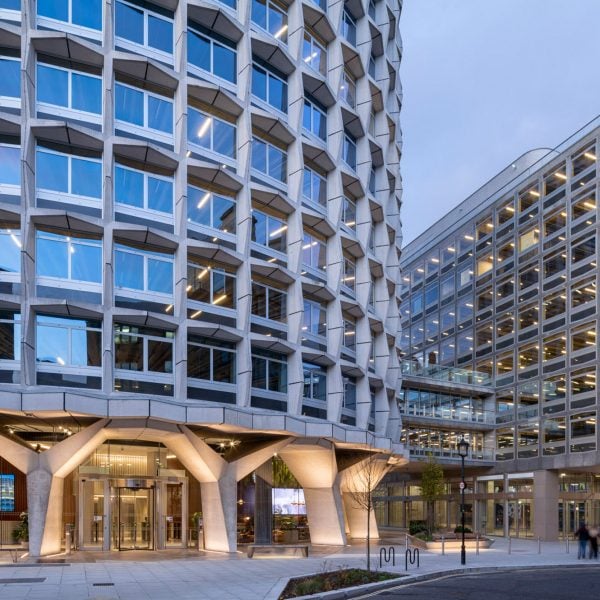British studio Squire and Partners has renovated and vertically expanded Space House in London, two mid-century modern office buildings originally designed by architects George Marsh and Richard Seifert.
Squire and Partners' aim was to celebrate the buildings while modernizing the facilities to include a restaurant, clubhouse, roof terrace, bike storage, outdoor plaza and event spaces.

Originally completed in 1968 by Marsh and Seifert, the heritage-listed Space House consists of a rectangular building called the Block, connected via a three-story bridge to a cylindrical high-rise called the Tower.
Working with property developer Seaforth Land and real estate company Quadreal, Squire and Partners retained 90 percent of Space House and replaced parts of the facade that had fallen into disrepair.
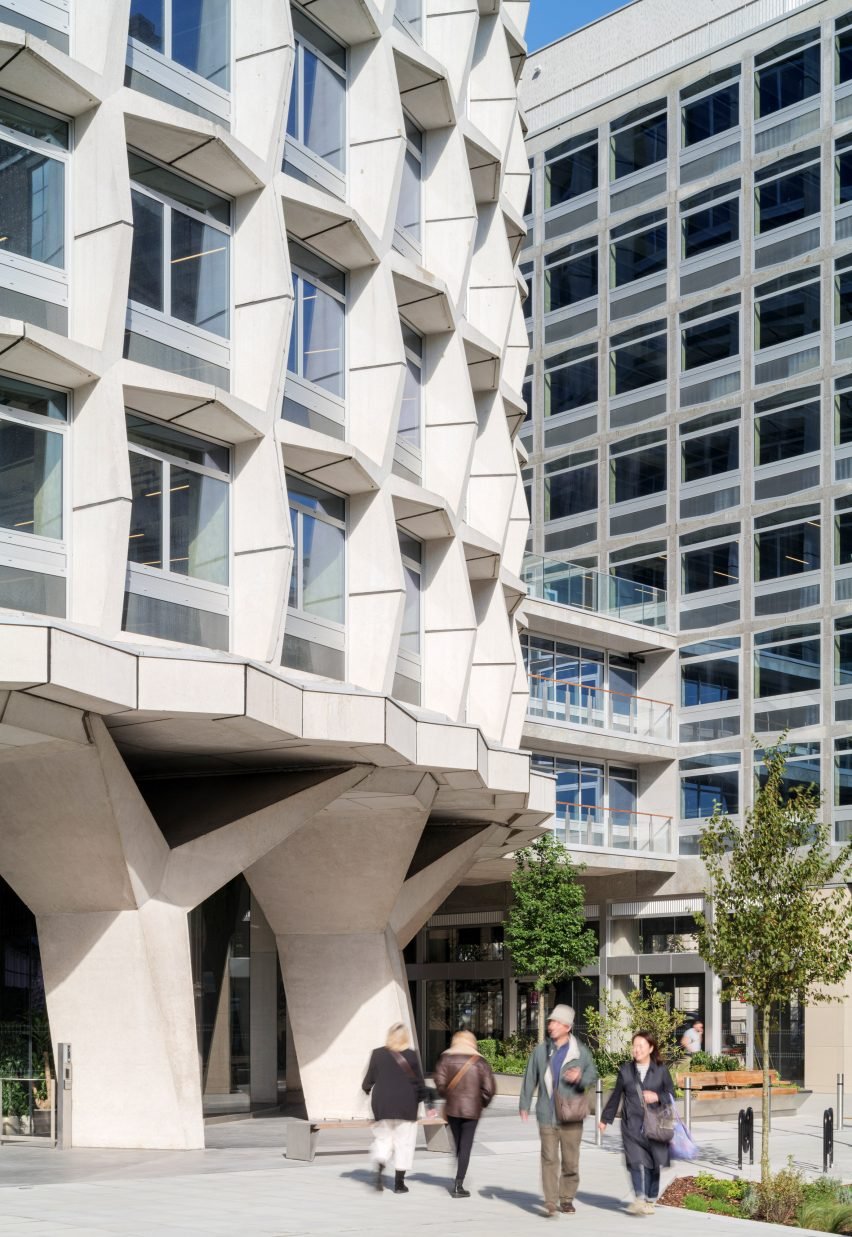
The tower features a faceted concrete facade supported by Y-shaped columns and has been expanded to include an office penthouse with outdoor terraces.
The block has also been expanded vertically to include a clubhouse with a roof terrace and bar.
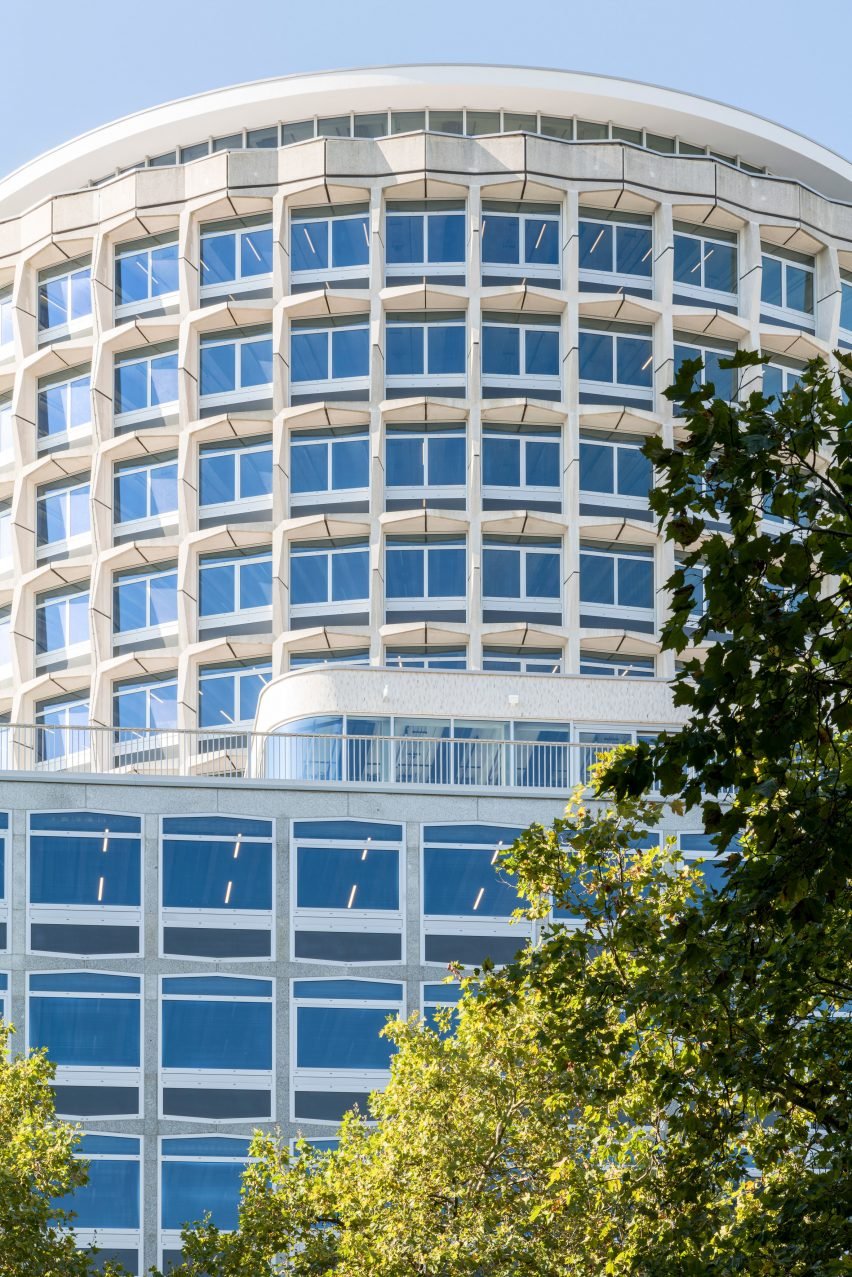
In an effort to honor Marsh and Seifert's original design, Squire and Partners removed previous interventions on the buildings.
“Space House is a very special and rare listed design icon,” said Tim Gledstone, partner at Squire and Partners. “The opportunity to completely renovate required tremendous passion and drive to bring it back to life and make it something even better than it originally was.”
“Originally built in 1968 and renovated in 1996 and 2003, our design has stripped away the layers of intervention to retain, expose and celebrate the original architecture and vision,” Gledstone continued.
“We have created respectful and highly sustainable new additions to open up the ground floor to public access, create modern working environments and meet the needs of tomorrow’s residents and visitors, extending the life of the building for many more years.”
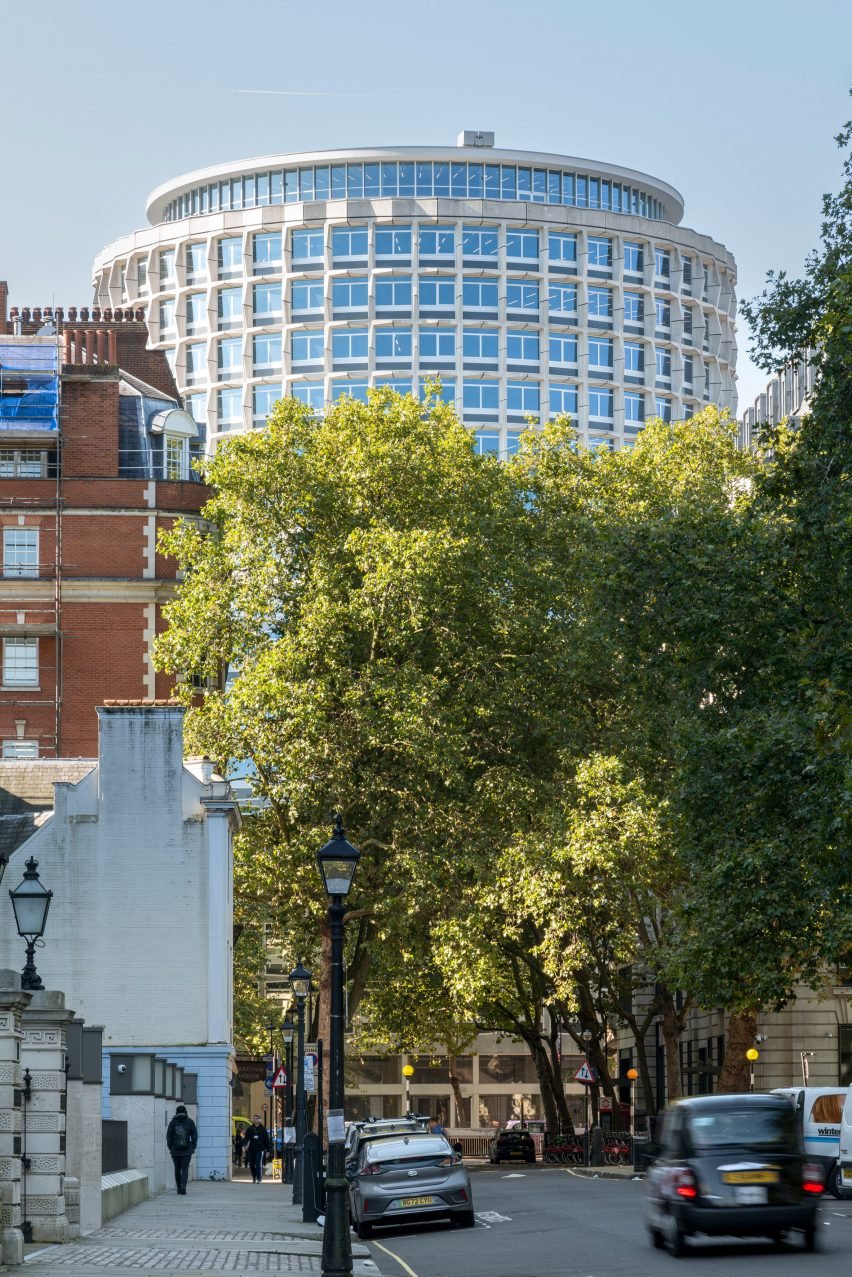
Squire and Partners claims to have achieved significant carbon savings by retaining most of the buildings' concrete construction and installing an automatic window system for cooling.
“The completed and modernized Space House is fully electric and carbon neutral,” the studio said.
“By successfully preserving 90 percent of the original building, an estimated 10,000 tons of CO2 emissions were saved.”
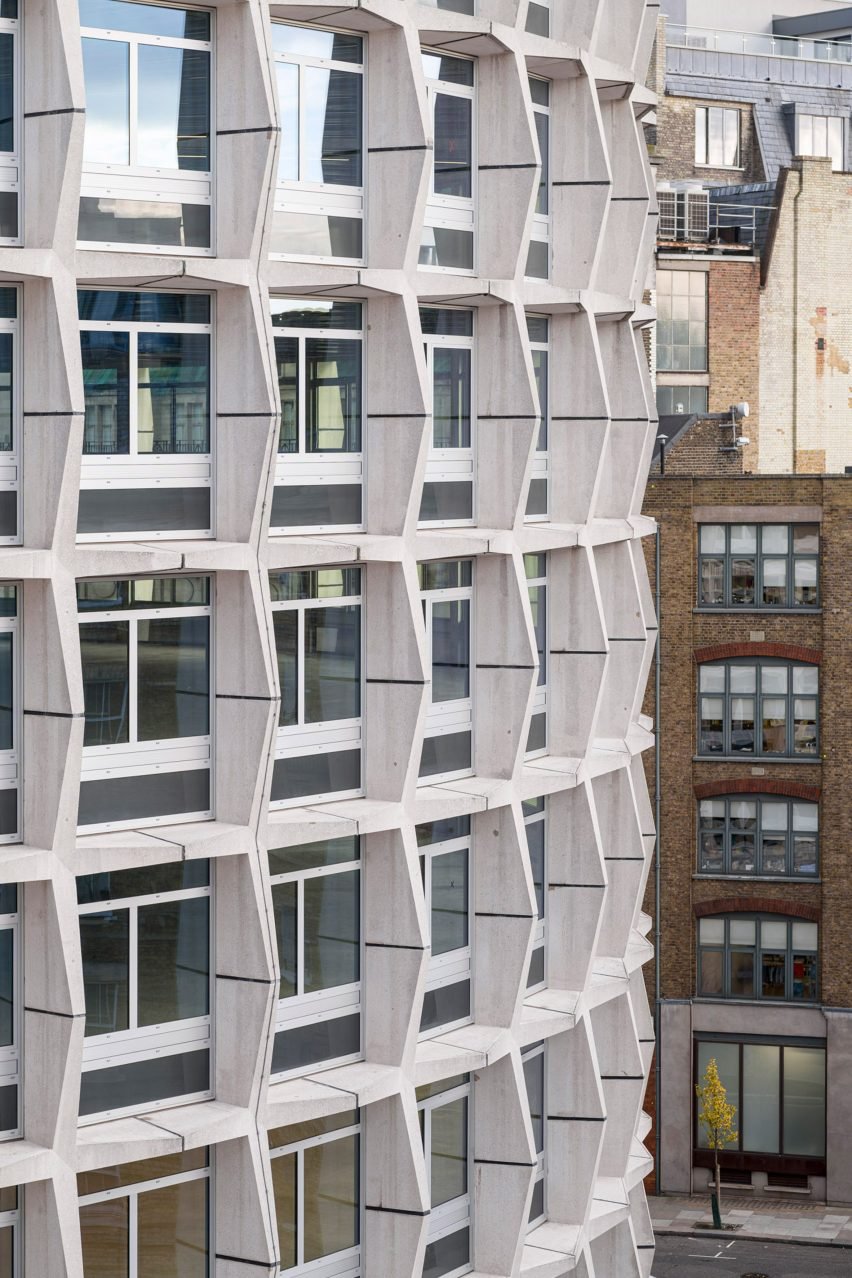
Space House's faceted concrete facade is shared with Seifert's Center Point Tower in London, which was converted into apartments by architectural firm Conran and Partners.
Squire and Partners, based in Brixton, was founded in 1976 by Michael Squire. The studio's other projects include the transformation of a Victorian warehouse in London and a wooden community center built next to the Brixton windmill.
Photography is by Gareth Gardner.
Project evidence:
Customer: Seaforth and Quadreal
Architect and interior designer: Squire and partner
Structural engineer: Pell Frischmann
MEP, BREEAM and sustainability: Atelier Ten
Costs and advertising: Gardiner and Theobald
Landscape architects: Gustafson and Porter and Bowman
Construction: BAM
